This post may contain affiliate links. Please read our disclosure policy.
Challah is my favorite Friday bread. Well, it is my favorite any time bread. Filled with a touch of sweetness, it is perfect for toasting or just sliced and buttered. Ideal for French toast. Not hard to make, it can even be made in a loaf pan.
This is an updated post from 2017.
Our family never had a challah bread on the table, as there was nowhere to get a challah in Kankakee. I think for special events at the temple, someone would drive up north to procure a challah.
You can rest assured my mother never had a challah recipe or tried to bake one. As a child my mother lit the candles and my dad said the kiddush blessing over wine, and we probably had a roast and a dairy noodle kugel-oy vey-but that was the extent of our Shabbat dinner, which usually concluded with running off to temple so us kids could sing in the junior choir.
My Grandma Fanny used to say, “Let everyone else eat cake. I’ll take the bread.” Personally I think she was on to something.
Growing up our daily bread consisted of bread from Pepperidge Farm, which was pretty good, and maybe a French baguette when Jewel moved to town.
I remember once we wanted to eat what all the other kids were eating so mom came home with a loaf of either Wonder bread or Rainbo. We immediately noticed how it stuck to the roof of our mouth and when we toasted it, the aroma of lard spread through out the kitchen. Now we never kept kosher, but that was one odor my father decided we could do without.
When I found myself at Colorado State, a long way from Illinois, my parents actually visited for parent’s weekend. Being a good child I let them take me to a Hillel meeting, and it was there I met what was to become my second family. I am forever grateful for that meeting.
It was there I met the warmest family of seven, who have stuck with me for better or worse. (And as a side note to Zoe, who thinks I have no friends that I have kept in touch with from college-well here ya go! I must say though that it was more thanks to them than me, that we stayed in touch over all these years.)
This family who had recently arrived from Israel, made my parents very happy when they promised to watch over me and that very same evening they invited me to a Shabbat dinner.
I, of course, asked what I could bring, and the person who was to become my dearest friend I’m sure said, “No need”, but for some reason I found myself saying with great confidence, “I’ll bring the challah”. I had recently bought a bread book and must have been enticed by the challah recipe in it.

That’s the only reason I can think of that I offered two loaves of challah, something I had never baked in my life! Well, I relied on that recipe for many years. It produced two lovely loaves of challah that were devoured each Friday night by 5 kids and guests, and quickly I became known as the challah baker and was always asked for my challah recipe.
And so it was that each Friday I found myself baking challah, attending a Shabbat dinner, and then leaving at a reasonable time to go drink a vast quantity of beer. After all I was in college.
This continued for I think three years, before they left to go home and suddenly my challah baking days were over… until I myself had kids.
Through these years I’ve found myself experimenting with many varieties of challah recipes. To tell you the truth there is not a bad challah in the lot. Schmeared with butter, toasted, made into French toast, used as sandwich bread or in bread pudding, challah is the work horse bread in my kitchen.
There is nothing that makes my house smell better than a fresh floor cleaned with Murphy’s soap or a loaf of challah baking.
What does challah symbolize?
Challah has many traditions that surround it. In my mind it isn’t JUST bread. It is special bread. There are rituals associated with challah.
During the Israelites forty years of wandering the Sinai, manna fell from heaven 6 days a week, but on Fridays two portions fell. The manna was kept fresh by the dew that surrounded it. It is that reason that two loaves of challah are served on Friday night, usually covered with seeds such as sesame or poppy, to remind us of the dew that kept the manna fresh.
The challah is covered in a special cloth as the blessing over wine is said first. We cover the challahs so they won’t be “shamed” because any other night the challah or bread is blessed first. On Shabbat the first blessing over the wine sanctifies the Sabbath, and the breaking of bread is the beginning of that meal to honor the Sabbath.
Why do we braid the challah?
Though many breads can be used for Shabbat, a three or six braided challah is the most traditional. If one places two 6 braided challahs on the table they are said to represent the 12 tribes of Israel. Challah braids can have many meanings but one often mentioned is that a three braided challah reminds us to honor the Sabbath and observe it and the third strand represents unification.
During the week when all can be a bit helter skelter as we look out toward the world; the end of the week we come together and look inward and reflect in peaceful harmony as everything comes together on Shabbat.
Most challah covers are embroidered with “in honor of Shabbat or holiday” but I am still trying to figure out what mine says! In our home after the blessing is said, we tear the challah rather than slice it. Not everyone does, but we believe that a knife signifies violence and the Sabbath is about peace.
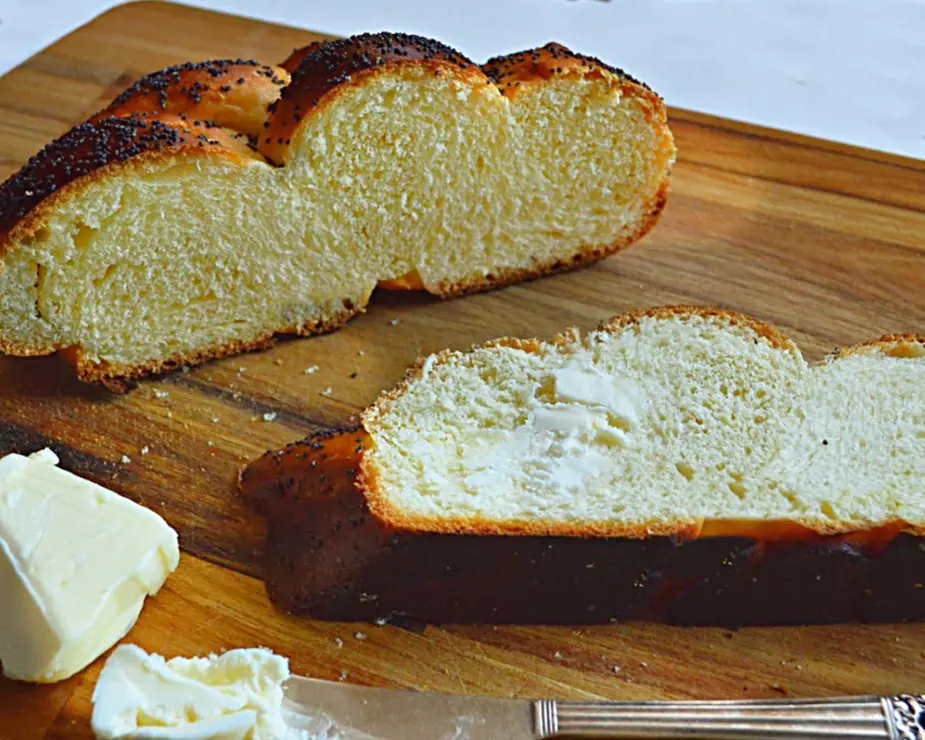
What makes challah special?
Challah bread, unlike most daily breads, contains eggs. Eggs make a richer bread, more deserving of a special occasion. It is also sweeter, unlike daily bread, which often doesn’t contain sugar. Challah can be made from wheat, oats, rye, spelt or barley.
Generally a challah used in a Shabbat meal is made without dairy-so no butter or milk allowed. Oil is used instead. Not keeping kosher, I often sub in both. I do admit to only serving one challah and freezing the other for future use!
Challah recipes are varied, but most contain the same ingredients-it is the proportions that are different. Some may contain more eggs, others less. Some contain honey. Others contain sugar or even sugar and honey. I prefer a lighter, sweeter, moist challah and others want a more dense, not too sweet challah.
Now there are recipes for everything challah, pumpkin challah, chocolate chip challah, garlic challah and just about any challah you can imagine.
There are more rituals associated with challah, but I think it’s time we get down to the nitty gritty. I’m giving you a great recipe from Bon Appetit. Like I said, I’ve tried many and all are similar, but this challah recipe makes two huge challahs or 3 small ones and I think more is better!
Tips on making challah bread:
- Read the recipe. Really. So many mistakes are made by not becoming familiar with the recipe. Plan your timing and this challah recipe will reward you!
- I always bake with unbleached flour. No need to use bread flour in this recipe.
- Make sure your yeast is fresh, otherwise your bread won’t rise. It should be bubbly. Test it with warmish to hot water and a pinch of sugar.
- I use my Kitchen-Aid to knead the dough. But of course, feel free to do it yourself. Kneading bread is very cathartic.
- Once you’ve baked bread a few times you will get the feel of it. By that I mean that sometimes bread needs more liquid. Sometimes more or less flour. You will understand that bread has feelings and you will get the knack of it. But honestly, it is hard to go wrong!
- To test if bread has risen enough, place two finger gently on top of your dough. If the indentation remains, then your bread has risen enough. If it pops right back , let it rise a bit more.
- Often I’ve kept the dough over night in the fridge and let it rise again the next morning. As it comes to room temperature it will rise but Depending on the heat of your home, this may take awhile.
- My other method involves preheating my oven to the lowest setting, turning it off after it is preheated, and then placing the bowl of dough covered in the oven to rise. Make sure to leave the oven door open if you try this.
- Bread sounds hollow and looks golden when it is baked. There are those that test bread with a thermometer but I wouldn’t know what temperature to tell you it should be.
- This challah recipe can be made in a large loaf pan. Divide into three sections. With your hands form a large strand. Twist it a few times and place it in your loaf pan. Let it rise and bake as per instructions.
Time to get baking!
Please Pin and Share:
I’m partnering with Amazon to help keep this site afloat. I may earn a small commission at no cost to you, which I use to help pay for costs to keep this blog going.
Stuff I’d Love:
I do not have a set of mixing bowls. I have two large aluminum ones. I get by, but I must admit this set looks pretty darn attractive! My Kitchen Aid that I inherited from my Grandma Fanny is a workhorse in my kitchen. She is over 40 years old and still puts me to shame. I’d say my Grandma Fanny knew a good investment when she saw one! However looking at this new one with a glass bowl, well, I must admit it is mighty tempting!
Print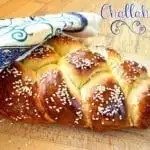
Challah Bread (My Favorite Friday Treat)
- Prep Time: 30 Minutes
- Cook Time: 35 minutes
- Total Time: 65 Minutes*
- Yield: 2 - 3 Loaves 1x
- Category: Bread
- Method: Baking
- Cuisine: Jewish
Description
Challah Bread is not so hard to make and is perfect for sandwiches, french toast, and butter! Of course, it is delish totally on its own!
Ingredients
- 2 1/4 ounce envelopes active dry yeast
- 2 t plus 3/4 to 1 c sugar (depending on how sweet you like your challah)
- 2 large eggs beaten
- 4 3/4 t kosher salt
- 1/2 c melted butter or canola oil
- 7 c all purpose, unbleached flour
- 2 large egg yolks
- sesame or poppy seeds for sprinkling
Instructions
- Whisk yeast and 1/4 c warm water in the bowl of a stand mixer. How to tell if your water is just warm? I let my tap run hot and as long as I can comfortably put my hand under the faucet, I consider it warm. Let sit until foamy, about 10 minutes.
- Whisk eggs, salt, 1/2 c melted butter or oil, 3/4 c sugar and 2 c warm water in a medium bowl. Add egg mixture and 7 cups of flour to yeast mixture. Beat with dough hook until dough is smooth and elastic, and not very sticky and pulls away from sides of bowl, about 10 minutes. Or you may knead by hand for about the same amount of time.
- Grease a large bowl with a bit of oil and transfer dough to the bowl. Cover with plastic wrap and let sit in a warm place until doubled in size, 1 1/2-2 hours.
- Turn dough out onto a lightly floured surface and shape into a large cylindrical roll. Divide into 6 portions. Shape each into a 17″ long rope.
- Grease 2 rimmed baking sheets or use a silpat pad or parchment paper. Place 3 ropes side by side on the prepared baking sheet. Working with one challah at a time, pinch three ropes together at one end. Braid, then pinch ends together and tuck under. Let sit in a warm place until 1 1/2 times larger, about 60 minutes.
- Preheat oven to 325. Beat egg yolks and 2 T water in a small bowl. Working with one loaf at a time, brush dough with egg wash and sprinkle with your choice of seeds. Bake first loaf 15 minutes, then increase oven temperature to 425 and continue baking until the loaf is browned and sounds hollow when tapped, 15-20 minutes more. Let cool on baking sheet.
- Reduce oven temperature to 325, then leave oven door open 5 seconds to cool down. Repeat baking with remaining dough.
- Challah can be made three days ahead, keep tightly wrapped at room temperature or freeze. Let cool before storing.
Notes
*Does not include rise time
More to try:
Onion Lover’s Twist
Maple Glazed Challah Rolls
Chocolate Babka
![]()

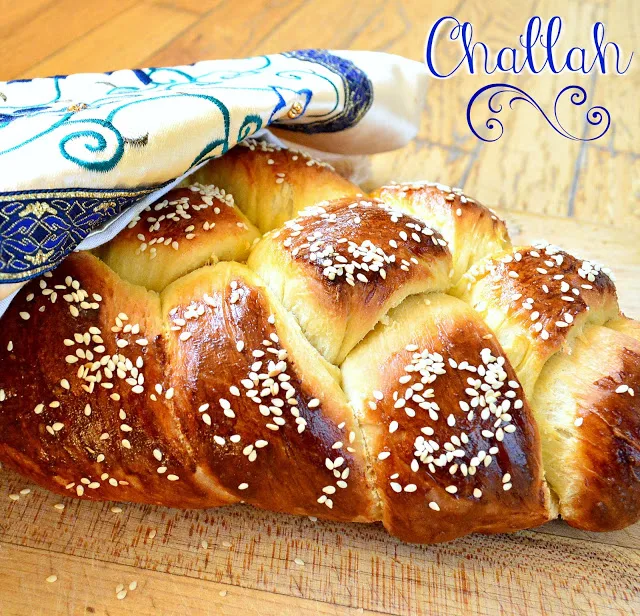
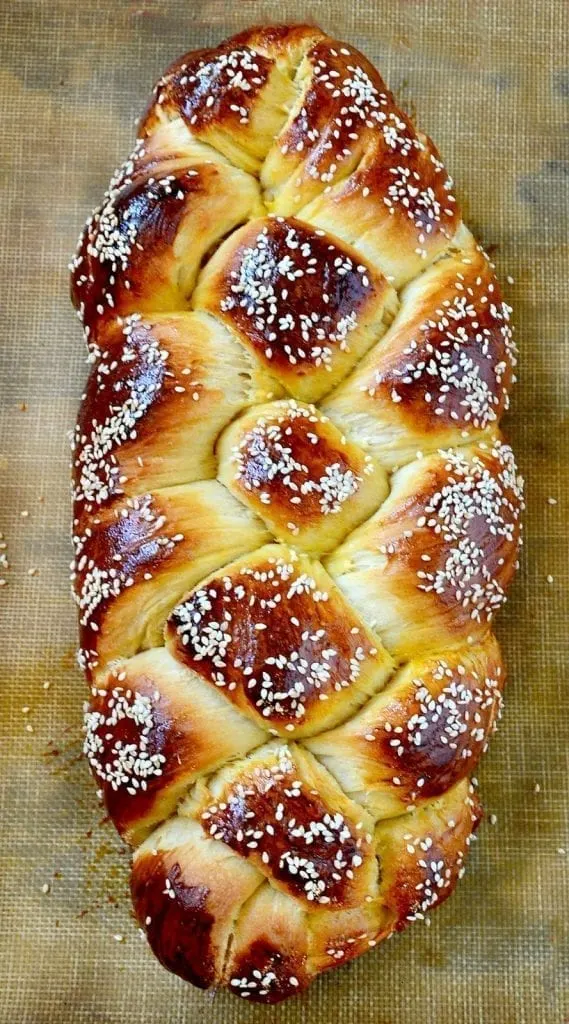
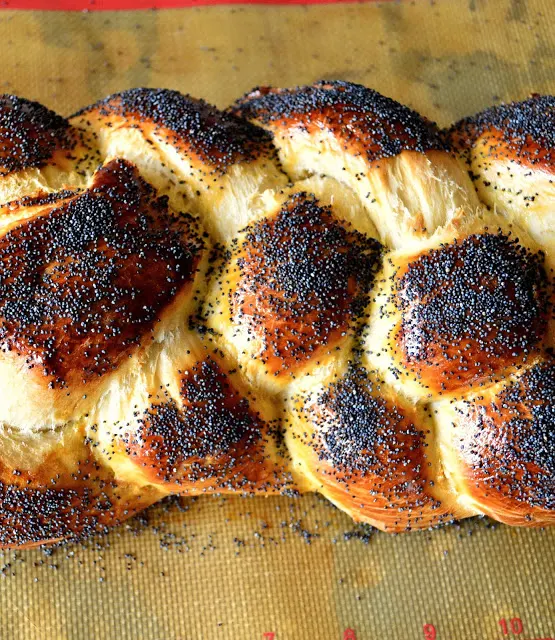

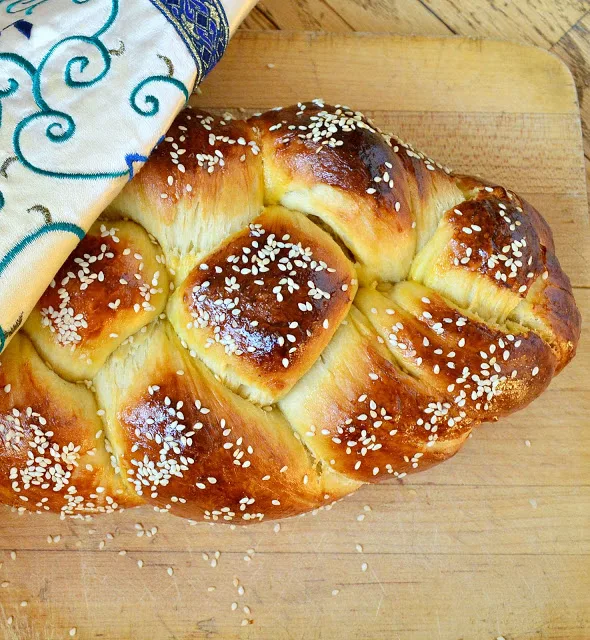
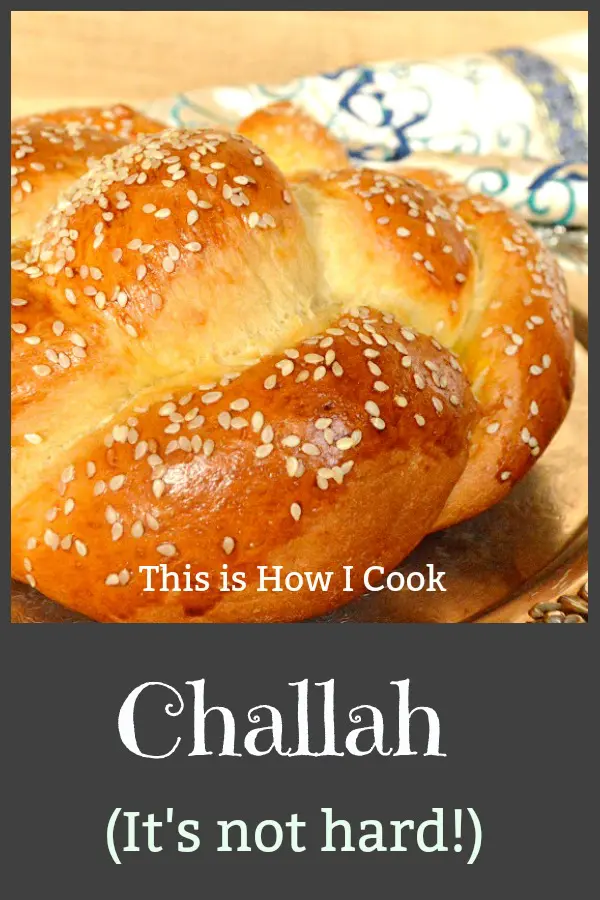
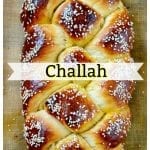
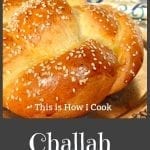
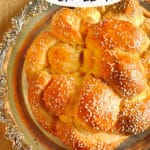
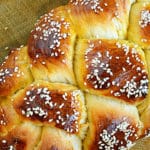
Foodgoggle
Monday 4th of May 2020
Great recipes..We are from https://foodgoggle.com/. A great food bloggers community which is like Pinterest and best alternative to Foodgawker. You can share your food recipes links, YouTube links, write food articles and follow your favorite foodies.Why wait sign up for free and share your wonderful recipes. Happy blogging!!
Thanks Foodgoggle Team
Healthy World Cuisine
Sunday 3rd of May 2020
Look at the beautiful browning and gloss on your bread. Stunning! Better than any bakery bread that is for sure. Thanks for the helpful tips on rising the bread. Hoping your weekend is going well. Take Care
Juliana
Friday 1st of May 2020
Hi Abbe...thank you for reminding me that is it not hard making challah...I love the braids...so perfect. Have a wonderful weekend and stay safe!
John / Kitchen Riffs
Friday 1st of May 2020
Glad to see this one return -- love the flavor of this, and it looks terrific. Gorgeous looking bread. :-)
mjskit
Monday 13th of March 2017
I do love Challah Bread. That little bit of sweetness makes every bite a happy bite. Thanks for sharing your recipe. I could never get it to look as beautiful as yours, but I'm sure it will be delicious!